It boasts hints of the OM-D and has the distinct flavor of Nikon’s Df. This rugged piece of machinery resists water, dust and temperature, sports an impressive 2.36 million dot OLED viewfinder (claiming to possess world’s highest magnification for a digital camera), the shutter time lag of 0.05 seconds is absolutely negligible and a whole new range of all-weather lenses is on the way to supplement an already impressive lens selection: et voilà the Fujifilm X-T1, a fine blend of some of the industry’s most impressive cameras and imaging features.
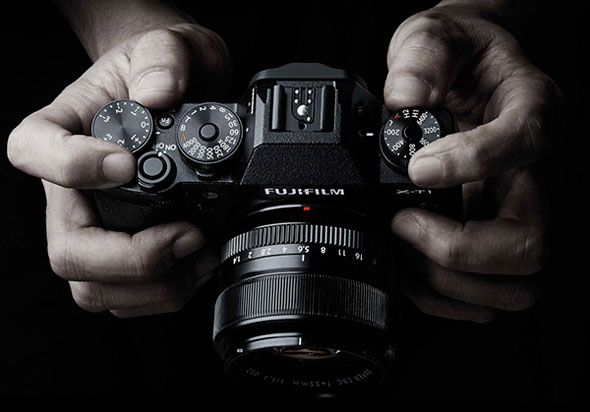
Nice, nice, nice. As often said here, the people at Fujifilm are photographers. They make cameras for photographers — and with the X-T1 a camera the market seems to be yearning for. This latest X series is certainly the best performing X body to date and Fujifilm’s new flagship camera, marking a determined departure from the former Leica-lookalikes.
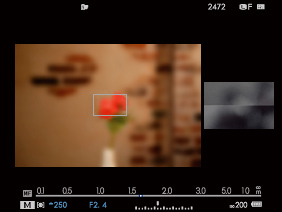
The viewfinder seems a class of its own, with a new dual mode EVF display — right, that’s a digital split image manual focusing screen (see the video)! H-e-l-l-o Nikon. Heck I really love the Df’s big bright grandpa pentaprism optical viewfinder. Fujifilm hits a home run with real retro manual focusing aids and if the X-T1 EVF’s brightness and clarity come close to the Df’s.
And let’s mention it again because it’s so nice: the camera’s size is just right. Not that the Nikon Df is too big, size is always relative. It’s just bigger, which allows for decent ergonomics and solid grip.
Maybe the X-T1 is a borderline case regarding optimal size. Both Fujifilm’s and Olympus’ flagships look a bit like twins:
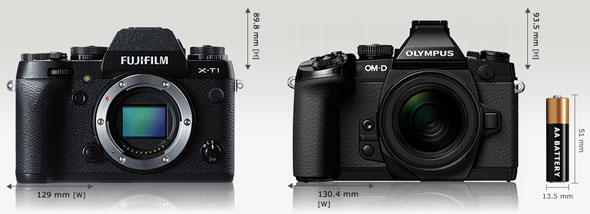
Now let’s have a look at the über-retro Df, a camera I adore if you bother to read my Df review:
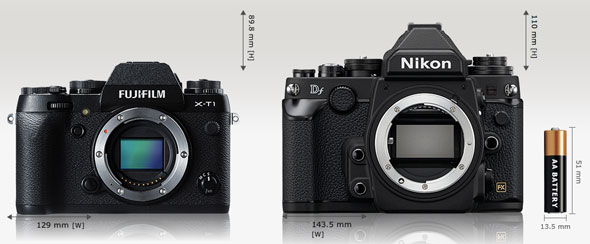
Whereas the OM-D is a bit too smallish for my taste (and I got small hands), the X-T1’s fewer flimsy controls might make up for the size disadvantage (or advantage, however you look at it).
Sensor-wise? Fujifilm’s acclaimed APS-C X-Trans II is bigger than Oly’s Micro Four Thirds and smaller than the Df’s full-framer. But in case you haven’t noticed, in this the year 2014 anno Domini you can take a camera for real even if it doesn’t have what many spend a lot of money on — and not always improves one’s photography. BTW, which camera was named camera of the year more often, the OM-D E-M1 with its “quarter full-frame” or the “realer” Df?
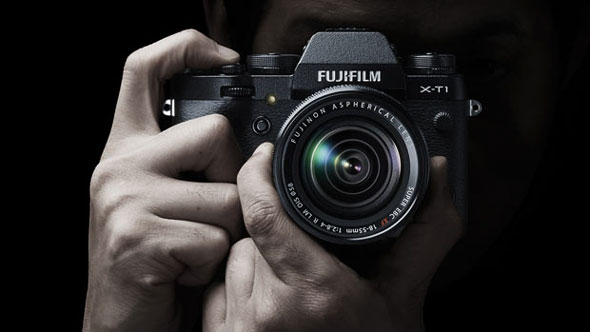
Attitudes changes, so does the photography market, but proven values stay the same. That’s where the X-T1 comes in, the culmination of Fujifilm’s imaging technology: a smaller camera with nice controls, great looks and sturdy body. And at $1,299 the camera’s price is not only nice, it’s half of the Df’s — whose heart and soul are its sensor.
The Df’s sensor performance is certainly way above the smaller Fujifilm’s in terms of low light sensitivity, and the Df’s DxOMark score truly is impressive. But many other factors matter not less: skin tones, color rendition, dynamic range, these are all qualities where the Fujifilms shine. With maximum ISO bumped to 51,600, the X-T1 is one of those cameras you can use for reasonably clean ISO 12,800. Unfortunately no ISO 50,
I don’t really care about super fast autofocus — Fujifilm boasts a burst rate of 8 fps in continuous mode! The faster the machine, the less I’m engaged as a photographer… But it goes without saying: this X-T1 hits many nerves. Will get my hands on one on February 6 and take it from there. Stay tuned!
+++ You can order the Fujifilm X-T1 from Amazon (body / kit), B&H (body / kit) and Adorama (body / kit).


